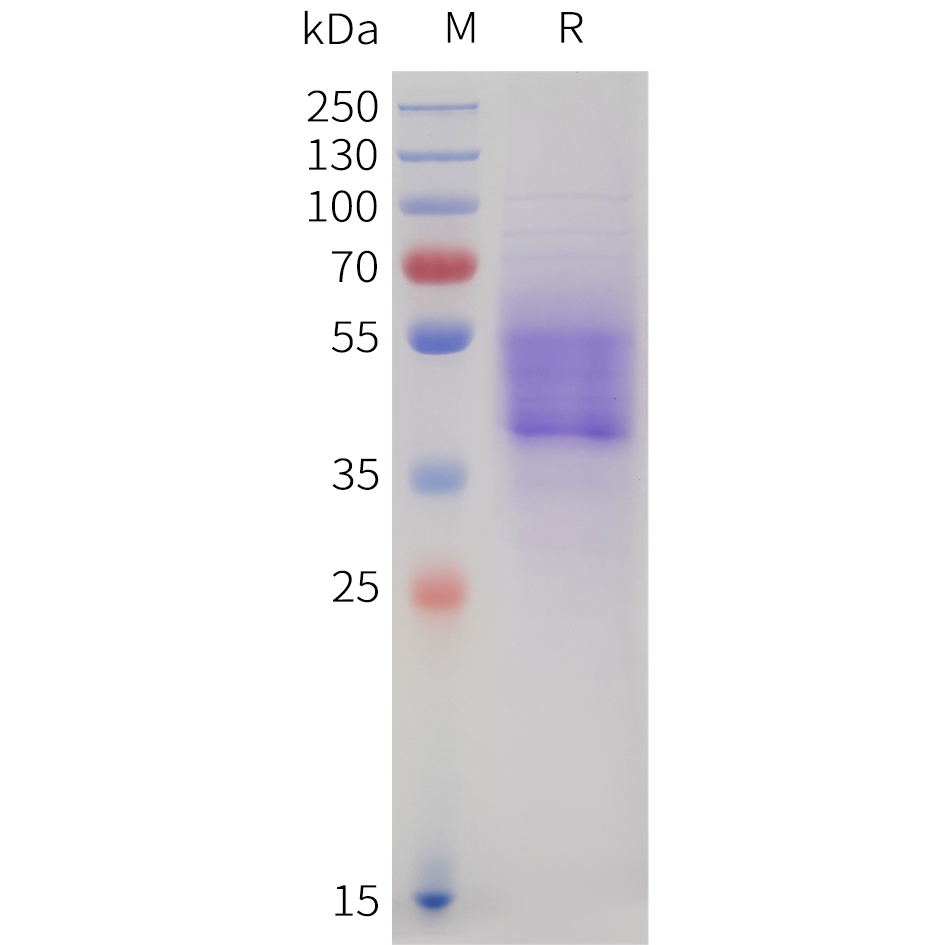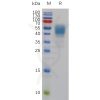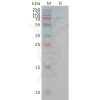| Target | |
|---|---|
| Synonyms | CNR1; CNR; CB-R; CB1A; CB1R; CANN6; CB1K5 |
| Description | Recombinant human CB1(1-116) Protein with C-terminal mouse Fc tag |
| Delivery | In Stock |
| Uniprot ID | P21554 |
| Expression Host | HEK293 |
| Tag | C-Mouse Fc tag |
| Molecular Characterization | CB1(Met1-Gln116) mFc(Pro99-Lys330) |
| Molecular Weight | The protein has a predicted molecular mass of 39.4 kDa after removal of the signal peptide. The apparent molecular mass of CB1(1-116)-mFc is approximately 35-55 kDa due to glycosylation. |
| Purity | The purity of the protein is greater than 95% as determined by SDS-PAGE and Coomassie blue staining. |
| Formulation & Reconstitution | Lyophilized from sterile PBS, pH 7.4. Normally 5 % – 8% trehalose is added as protectants before lyophilization. Please see Certificate of Analysis for specific instructions of reconstitution. |
| Storage & Shipping | Store at -20°C to -80°C for 12 months in lyophilized form. After reconstitution, if not intended for use within a month, aliquot and store at -80°C (Avoid repeated freezing and thawing). Lyophilized proteins are shipped at ambient temperature. |
| Background | This gene encodes one of two cannabinoid receptors. The cannabinoids, principally delta-9-tetrahydrocannabinol and synthetic analogs, are psychoactive ingredients of marijuana. The cannabinoid receptors are members of the guanine-nucleotide-binding protein (G-protein) coupled receptor family, which inhibit adenylate cyclase activity in a dose-dependent, stereoselective and pertussis toxin-sensitive manner. The two receptors have been found to be involved in the cannabinoid-induced CNS effects (including alterations in mood and cognition) experienced by users of marijuana. Multiple transcript variants encoding two different protein isoforms have been described for this gene. [provided by RefSeq, May 2009] |
| Usage | Research use only |
| Conjugate | Unconjugated |
服务热线
400-006-0995
18062749453






